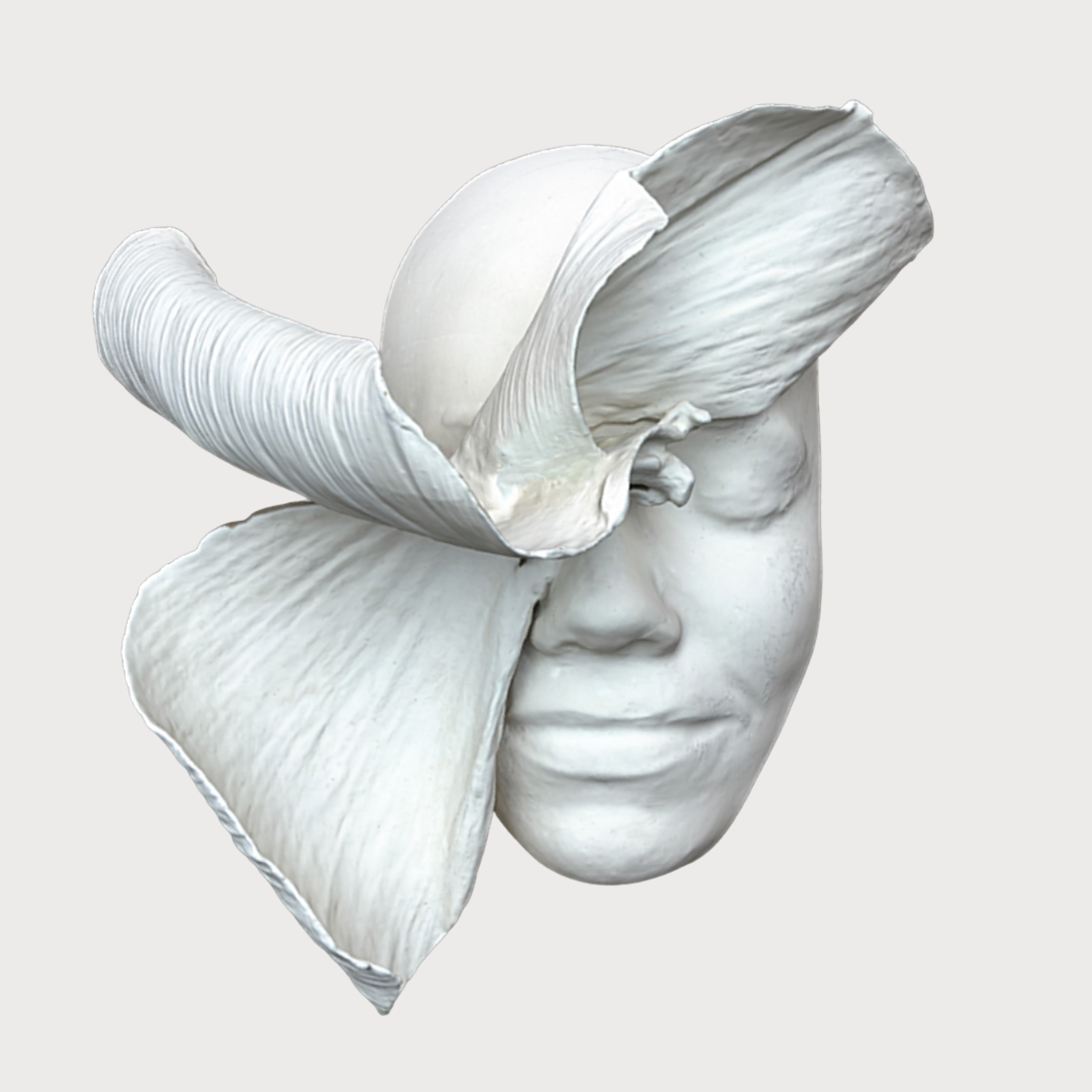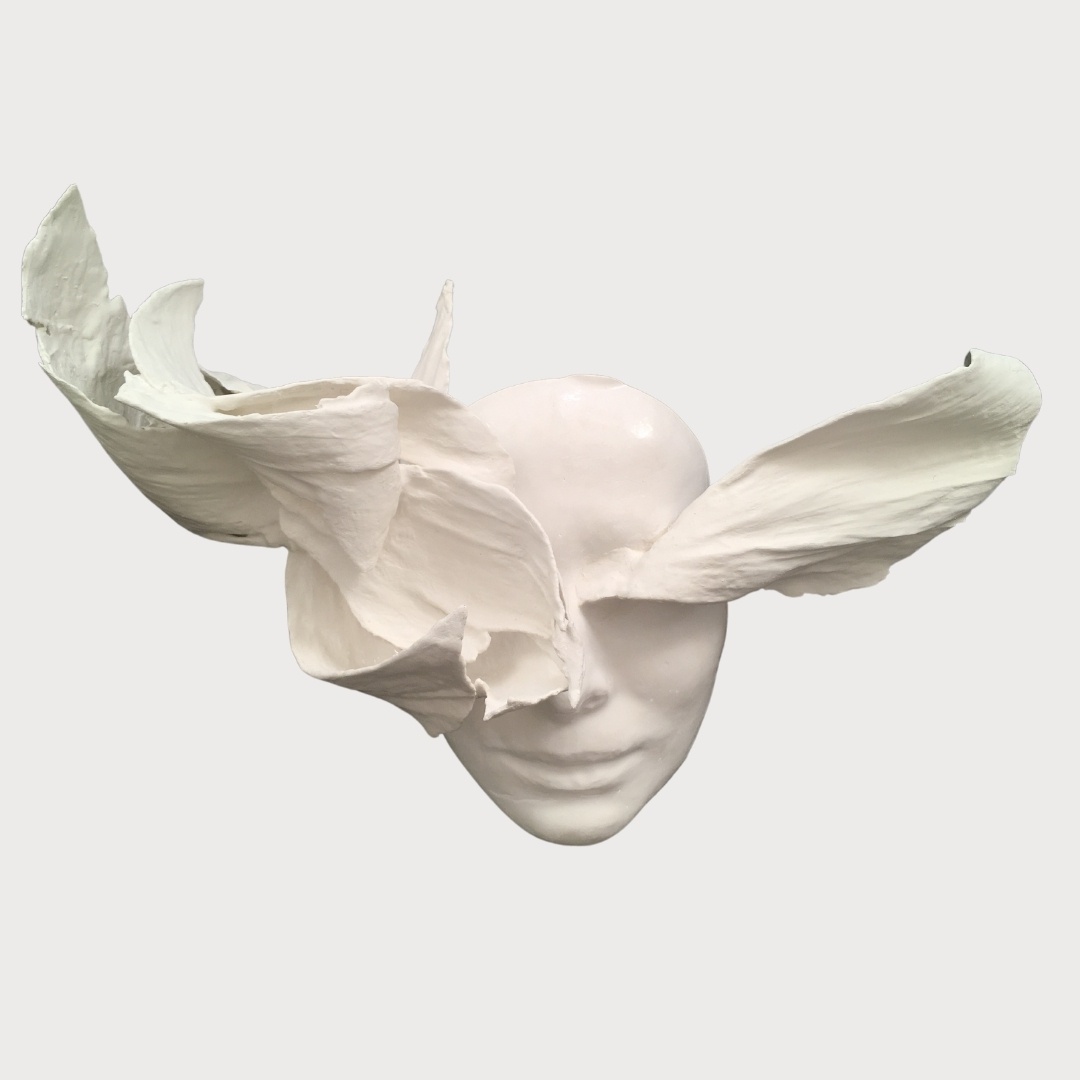Jasmine Pradissitto
@Jasmine_Pradissitto
-
INTERVIEW
2021How would you describe your artistic practice in three words?
Intuitive, cross-fertile, mythopoetic
What issues do you believe need to change or be challenged in the art world?
Whenever I think of this classic quote from the beautifully creative film ‘Ratatouille’ springs to mind when the critic voiced by peter O’Toole says....
’Not everyone can be a great chef, but a great chef can come from anywhere’.
For too long, Art much like Science has been siloed and part of a rarefied world few could break into unless they were part of a particular group or had studied at the right places and understood a language invariably shrouded. Yet I believe and have championed that the more we are given the permission to bring in all our previous experience, the more creative we become and that everyone has an ability to think creatively no matter who they are or whence they come. As a scientist once, I had to do art in secret and yet now the polymath is celebrated and women and mothers now of all ages are able not to apologise for having had to ‘multitask’ but to realise that this created an impenetrable focus and that we were CEO’s managing a multitude of things including the focus on our art. I also believe the older we become, the more creative we become simply because we have more ‘dots’ to join and the ability to join seemingly unrelated things is one of the definitions of genius.
Personally, I also believe that as data and science has failed us in term of communicating some of the most pressing of the global issues we now face, Art is stepping into its place. Well perhaps its more about a pluralistic view. They are best together. Every artist is a result of everything they experience and the people they meet and with current affairs touching each and everyone one of us, it would be impossible to create work that is not somehow imbued and inspired with some of this narrative. If we are moved by nature for example, and this has been one of the benefits of the pandemic...our reconnection to the only ‘social’ world we were allowed which was outside, makes it impossible not to notice that insect numbers are dropping and with one in every 3 mouthful of food being provided by a pollinating creature this has massive ramifications; yet a meadow garden containing a sculpture can inspire far more action than a set of statistics. The same applies for the need for clean air throughout the world the nature of which we couldn’t really grasp until a pandemic made it so visible . It is only when it becomes personal that I think we truly notice. This is the power of art, which like nature should be available to all. Things that can be experienced without a need for translation.What is your studio like?
Ahhh..my studio could be literally anywhere depending on what materials and facilities I have to hand and what is inspiring me at the time. Years of working with children taught me that we can be creative anywhere and with anything although I know seem to have amassed a wealth of very different materials which I cross use all the time. I have painted everywhere from my bed to the garden to proper tech workshops and studios to outside in the garden and even in a plant nursery. I don’t really have anything in particular I listen to...very often its in silence or sometimes I listen to lectures by people like Buckminster Fuller or Alan Watts. Love the futurists from the past.
Could you tell us a bit about the artworks you have in ‘Heart of the Matter’?
The rapidly growing discourse of ‘The Anthropocene’ denoting the current geological age as the period during which human activity has been the dominant influence on climate and the environment is a fitting word to use at the start of what is a celebration of women. ‘Anthros’ as the Greek for ‘man’ and ‘cene’ for ‘new’; a new age which arguably started with the first great revolution in agriculture and later was dominated by the outcomes of our progress mostly fuelled by carbon as we entered an age of Industrial revolution.
This idea that our palaeolithic past is inherently part of our technologically future is one of the aspects that drives my work in an era where rival ‘cenes ‘abilities and ‘alisms have created a cauldron of terms which are less about action and more about terminology. They are a distraction. And so, Faced with multiple narratives in everything from the sciences to the humanities, my work, like so much of my background, reverts to first principles. As a scientist my hypotheses where bult on the natural laws and discoveries which preceded and as an educator I quickly learned the power of simplification to communicate the most difficult of ideas. Such ‘first’ principles I believe are inspired by the most basic or our needs and beliefs. We can only live for 3 minutes without air, 3 days without water; despite our progress we are fundamentally flesh and bone which needs to be sustained. Nature will survive without us but we have forgotten that we cannot survive without her.
It is telling that Earth is the only planet not named after a Greek or Roman God and yet for millennia we have looked to these fictional deities in order to make sense of a cosmos in which we are only the tiniest of particles. Evolving in small communities, we could only really comprehend the most immediate from the changing of seasons to the bounty, or lack of, the harvest and yet in the 17th century, when environmental awareness over loss of forests and depletion of soils was in its infancy, the long term goal of the betterment of humankind was through the control of nature. We had forgotten our diminutive place in a huge universe. For the 21st century, however, the ethic of control is giving way to one of partnership with the natural world. A partnership ethic entails a viable, sustainable relationship in which connections to the global world are recognized through science, technology, and ecological exchanges. It is an ethic in which humans act to fulfill both humanity's vital needs and nature's needs while restraining human hubris.
And so I find, as I am a great believer in cross- connective thinking and collaboration to fertilize new ideas, we should approach the new conceptual age with plurality. Whether it be gender, race, financial, climatic or environmental inequality, they are all inextricably linked..... and it has happened I believe partly because we have have lost our stories. We have forgotten from whence we came.
Through my classical training both in science and art and the fact that I spent so much time in Italy growing up, the ancient Gods of nature and transformation have become an intuitive source of inspiration as I try to find a new pluralistic narrative for a future in which we once again live in harmony. But Much like the paradoxes inherent to the physics I once did, and because of the polarity in all of us, I veer concurrently between the dystopian of the past and utopian view of what is possible.
The two sculptures for this show are ‘Pan in a Brave New World’ and ‘Persephone emerging’. Aldous Huxley’s book had a huge influence on me in my twenties and has been seen to be so prophetic and the hero’s and heroine’s story always inspired me from the days when I inhabited the Forbidden Planet of graphic novels. Our current fascination with Marvel and DC superheroes has brought it full circle. We want to become the best versions of ourselves and this is enormously hopeful.
Pan is one of the most ancient of the Gods and can be seen reinterpreted in the pagan Green Man. The god of nature and the shepherd. I have cast him/her in Noxtek and used corn leaves. A playful God of the forest he was one of the few that never indulged in fighting and ‘pan’ meaning all-encompassing couldn’t be anymore relevant as we live through the pandemic of our age; not simply a virus but a lack of connection to our natural world. The face of the young polymath I used, an engineer as well as a dancer who heads up research in Future cities. She is a Pan for this new age.
Persephone, Goddess of the underworld, is quite unintentionally a self portrait I now realise, using my own face with corn leaves in Noxtek. Half covered half revealed, half light and shadow her emergence from The Underworld /(after having been abducted by Hades) every six months, resulted in her mother Demeter, the goddess of harvest and grain creating the seasons; spring and summer in joy when her daughter returned and winter and fall for her absence. My constant swing between the light of what is possible and the dark of what has been destroyed is why I made her; the corn reminds us that our very evolution to such numbers was purely because we could create and grow more and more food. But with biodiversity extinction, top soil erosion, the lack of understanding that the natural world is a resource that needs to be honoured, that water is becoming like any stock to be traded and that nearly 1 in 5 die in the world because of poor air quality ; well the loss of the most fundamental things which sustain our basic of needs are not only almost impossible to grasp but creating greater and greater inequalities.
But in hope, finding and pioneering new materials that can cause an intervention; creating contemporary narratives based on our ancient beliefs, the growing body of artists, scientists, legislators and institutions who are addressing ecology....we are creating a new more hopeful blue print for the future.
Who are your art world role models or muse?
My current muse is the natural world and our connections to each other....and I have found that those who have inspired me and continue to often have a similar affinity...everyone from Polymaths such as Leonardo da Vinci, to Alexander Mcqueen alexandermcqueen( who for me was a genius sculptor in fabric);
Yayoi Kusama yayoikusama_and her need for kindness and awe throughout her work.
Sculpturally I admire Rachel Whitread rachelwhitereadofficial whose work strikes me as the same paradox I experienced throughout my career in physics (making the negative space a physical tangible thing) and most recently I stood in front of Dorothea Tannings’ painting Insomnia for ages at The Tate . In fact as I write, I realise it’s the melding and blending to communicate something new which fascinates ....either using a material in an unusual way...stretching the boundaries of what is possible.
Love Elliason’s studioolafureliasson of STEAM subjects to communicate the effects of climate change and that The Sun project then resulted in a solar powered ‘Little Sun’ which is continuing to change lives globally. In terms of the classical, Bernini’s ability to make stone flesh, Rodin to communicate human intimacy and more contemporary Gormley for scale vs human and mark making in steel.
